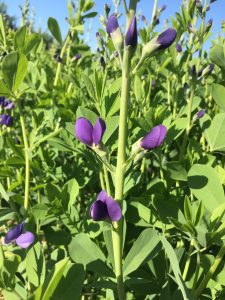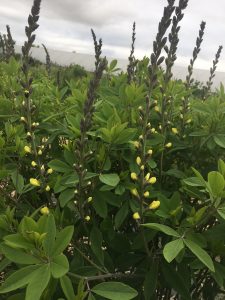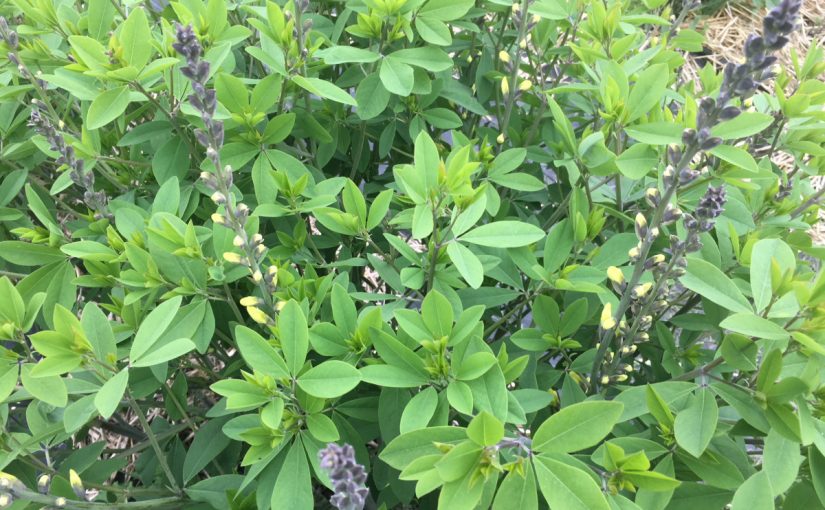Family: Fabaceae (also in this family: all peas and beans including sweet pea, snap pea, green beans, peanuts, chickpea, as well as lupine, wisteria, mimosa, cercis, kudzu, scotch broom, etc.)
Genus: Baptisia
Scientific Name: Baptisia australis
Baptisia is native to central and northeastern North America and extremely common in the Midwest. In the wild, it is predominantly growing on the borders of forest, on the banks of rivers and streams, and in open meadows. It is a fairly hardy plant, capable of surviving drought and can be planted in clay or rocky soil. All parts of this plant, including seeds and seed pods, are toxic and should never be consumed.
Baptisia is best propagated by dividing the crown, similar to peonies, lupine, or iris. You can grow from seed, but it will take at least 3 years to establish (Baptisia australis – Plant Finder). To do asexual propagation, dig up the crown in the fall and divide. Should be able to tease apart fairly easily.
Fabaceae have pretty unique and easily recognized flowers and baptisia is no different. Pea family flowers are usually comprised of five generally fused sepals and five free petals. They are generally hermaphrodite, with a short and often cup-shaped hypanthium. Inside, there are normally ten stamens and one elongated superior ovary with a curved style. They are usually arranged in indeterminate inflorescences. Fabaceae are typically entomophilous plants, meaning they are pollinated via insects and thus appear very attractive to pollinators (Zomlefer).

Photo: Allie Kuppenbender
According to the Missouri Botanical Garden
- Zone: 3-9
- Bloom Time: flowers late spring to early summer
- Bloom Size: 1-2 ft (individual flowers .5-1in)
- Height/Spread: 3-5 ft
- Soil: well draining
- Site: Full sun to partial shade with dry to medium water needs
- Type: Herbaceous perennial
- Seed Type: Dicotyledon
Baptisia is an extremely versatile cut flower, as it can be harvested as a cut flower in late spring, as foliage/fruit in the summer months, and as seed pods in the fall (Jello Mold) (Armitage & Laushman). For longest vase life when harvesting the flowers, cut when the bottom flowers are starting to open, but the upper buds still remain shut.

Photo: Allie Kuppenbender
SOURCES:
Baptisia australis – Plant Finder, Missouri Botanical Garden
Guide to Flowering Plant Families, Wendy B. Zomlefer
Plant Families: A Guide for Gardeners and Botanists, Ross Bayton and Simon Maughan
Specialty Cut Flowers; The Production of Annuals, Perennials, Bulbs, and Woody Plants for Fresh and Dried Cut Flowers, Allan M. Armitage and Judy M. Laushman
